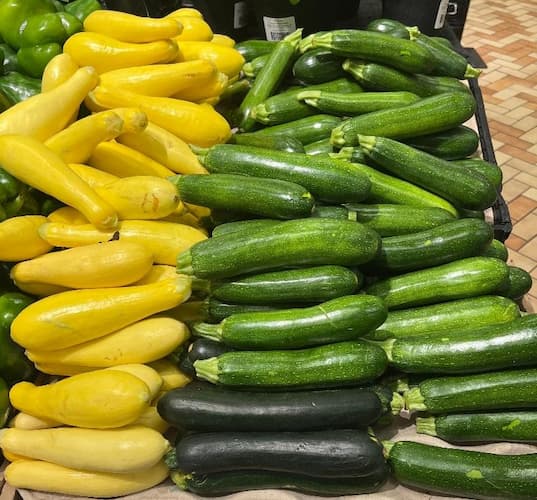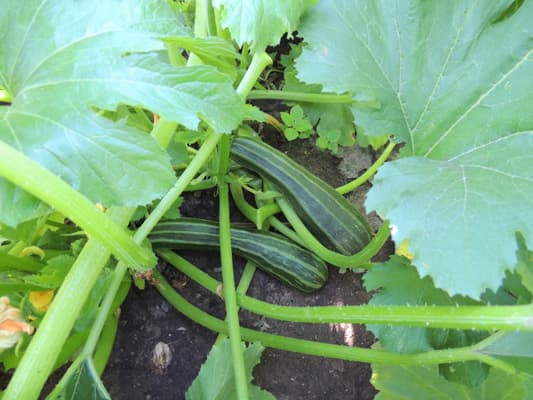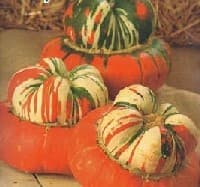How to Grow Squash

How to Grow Squash in Your Home Garden
Squash plants are easy to grow, and most varieties are prolific producers. The size of your garden may determine which varieties to grow. Bush varieties requires a much smaller space, than vining varieties. This “How to Grow Squash” guide will help you to grow an abundant crop of whatever variety you choose.
Squash plants are members of the Cucurbita family of vegetables, which also includes pumpkins. There are a very wide variety of squashes, resulting from easy crossbreeding among family members. If you grow a variety of squash and save the seeds, next year’s crop may likely produce some very strange and interesting crossbreeds (Mutations!).
Varieties of Squash
It is impossible to describe every variety of squash, as they readily crossbreed across varieties, producing a seemingly limitless range of crossbreeds. Listed below are the most common “purebred” types. Most squashes are vining plants, but several varieties, including the infamous Zucchini, are bush types. Make sure you know which variety you have before planting, and plan your garden space accordingly.
There are winter and summer varieties. Winter squash produces fruit with thick skins. They can be stored for long periods, well into the winter months if properly stored. The skin of winter squash is not eaten. Summer squash produces thin-skinned fruit and does not store well. As a result, it is usually eaten without peeling the skin.
For more information, see: popular varieties of squash

How to Start Squash Plants from Seeds
Squash plants are tender annuals. Frost and freezes will kill the plants. So, make sure to start them after the last frost date in your area. Or, you, can get an early start by planting some indoors in peat pots or peat pellets.
For outdoor starts, plant seeds in rows or hills, planting seeds one inch deep. Row spacing is dependent upon the variety of seeds you are planting. In hills, plant four to five per hill. After they have germinated, keep the best two to three plants. Cover very lightly with soil. Water the first day and if there is no rain, every two to three days until they germinate.
How to Grow Squash - Season Long Care
Squash plants should be grown in full sun.
Squash plants are food hogs. They need rich garden soil and ample fertilizer. The soil should be well-drained. A side dressing of fertilizer and regular feedings of fertilizer will significantly help the health of the plant and the size of the harvest.
Water regularly, especially during dry periods and the fruit growth stage. Water deeply. Like other garden vegetables, keep the soil moist, not wet. It is important to note, that irregular watering, can result in premature ripening of the fruit.
Weed regularly, especially during the early growth stage. Adding a layer of mulch or compost, will keep the weeds down, and feed the plant.
Train vines to go in the direction you want them to go. Carefully, and slowly, turn vines as needed. Move them a little each day. Trim vines, removing tertiary vines to promote larger fruit growth.
Tip: Bury vines with an inch or two of garden soil, to encourage secondary root growth.
Ideal Soil pH: 6.5 – 7.5. Ideal Soil pH – by vegetable
Also, see:
Soil Temperatures – Ideal germination temperature by vegetable

Insects and Pests
A wide variety of insects enjoy feeding off these plants. It is important to have an insect control plan in place before they begin to invade your garden.
The Cucumber Beetle is the dreaded pest of all members of the Cucurbita family. Cucumber Beetles are either striped or spotted. They feed on the leaves of the plants and can cause even greater damage. Cucumber beetles spread disease from one plant to another. Fortunately, they are effectively treated with most insecticides. More on Cucumber Beetles
Squash Vine Borers (SVB’s) are a serious problem in some areas. SVB’s bore into the vine and eats the vine from the inside out. Untreated, it ends your season. More on Squash Vine Borers.
Squash Bugs will suck the juices of plants. If severe, the plant will die. More on Squash Bugs
A variety of other pests can also cause problems, depending upon where you live. Apply insecticides as needed, following the directions on the label.
Plant Disease
As a member of the Cucurbita family, most squashes are susceptible variety of bacteria and fungus diseases. Among the most common, are powdery mildew and bacterial wilt.
Plant disease problems are most common in hot and humid weather. A strong, healthy plant and fungicide treatment will help avoid these problems. Don’t wait for plant disease to get a foothold in your plants. Treat with fungicides at the first sign of problems.
Plant Problems – Diagnosis, causes, and cures for many common plant problems.
Plant Hardiness
Squash plants are not hardy. The plants are susceptible to frost in the spring and fall. They are also very susceptible to insects and diseases. But, most growers successfully plant and harvest at least one variety.
Also see: Plant Problems
Harvesting Squash
Days to Maturity: Most summer squashes require 45 to 50 days to maturity. Winter varieties usually mature in a range from 70 to 110 days or more. The larger fruited varieties, like Blue Hubbard, require the most time.
Did you know? Most people know that giant pumpkin growing is a big hobby, with avid growers. But, did you know that almost all pumpkin weigh-offs also have a category for giant squash? These mammoths can also grow well over 1,000 pounds!
Recommended Recipes
How to Grow Grape Tomatoes - Related Articles
Please support our site. Shop for:
- rmmatthews100@hotmail.com
- 585-721-6528
- Rochester, NY
©1999-2024 GardenersNet.Com, All Rights Reserved

